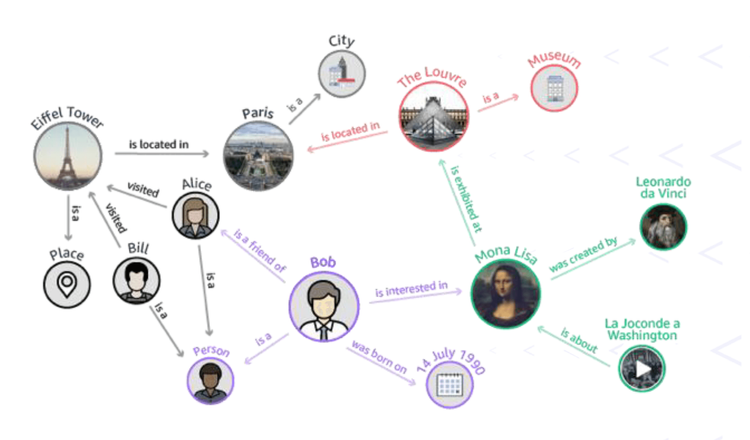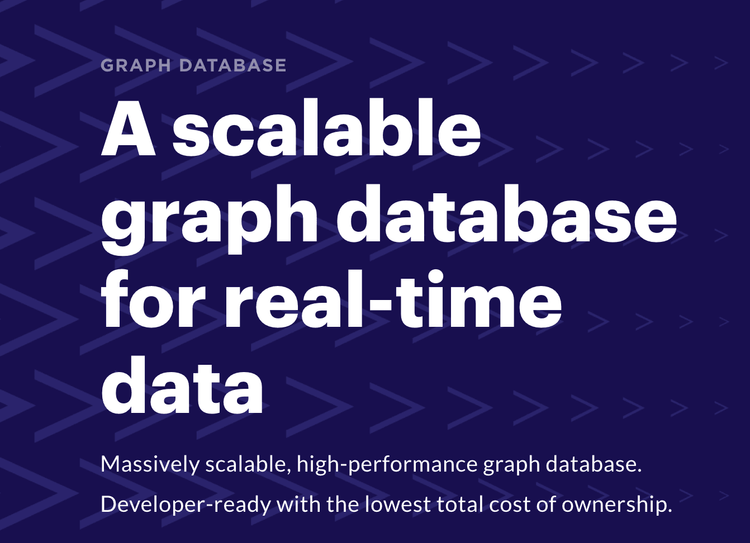New technical options for building an identity graph at scale
As the digital advertising ecosystem braces for the phaseout of third-party cookies in Q4 2024, the rush for effective identity solutions intensifies. Ad tech companies, publishers, and advertisers face the daunting challenge of building scalable identity graphs to ensure the continuity of high-quality data for ad requests, reporting, and audience targeting. In this article, we explore new technical options for constructing identity graphs at scale, highlighting innovations and experiments that promise to revolutionize the industry.
Share:
Got a project?
Harness the power of your data with the help of our tailored data-centric expertise.
Contact usShare:
Got a project?
Harness the power of your data with the help of our tailored data-centric expertise.
Contact usKey Takeaways:
-
Urgency for identity solutions: With third-party cookies being phased out, there’s a heightened demand for identity solutions among ad tech companies, publishers, and advertisers to maintain high-quality ad targeting and reporting.
-
Importance of identity graphs: Building comprehensive identity graphs that map users across devices and households is becoming increasingly essential for maximizing advertising value and relevance.
-
Technical challenges: Capturing and linking vast amounts of data to build these graphs poses significant technical hurdles, with traditional graph databases often falling short in scalability.
-
Innovative approaches: This article highlights a successful case of using Apache HBase and Apache Spark for scalable identity graphs, and it notes promising experiments with Aerospike Graph for enhancing graph capabilities.
-
Functionality of identity graphs: Identity graphs are crucial for merging first-party data with anonymized information to create detailed user profiles, enabling more targeted and effective advertising.
-
Data management and querying: Efficiently managing and querying immense volumes of data in real time is a key technical challenge, necessitating solutions that support high-speed data insertion and complex queries.
-
Real-world solutions: The discussion includes examples of overcoming scalability and querying challenges using custom solutions with Apache HBase and exploring new technologies like Aerospike Graph for improved performance.
-
Future prospects: The evolution of identity graph technology, such as Aerospike Graph, offers the potential for simplifying graph queries and addressing scalability issues, indicating ongoing innovation in the field.
-
Customization and optimization: This article discusses the necessity for tailored solutions based on specific query needs and the continual refinement of these technologies to optimize for various advertising requirements.
With the phaseout of third-party cookies coming in the middle of Q4 2024, the urgency around identity solutions has reached a fever pitch among companies in the advertising ecosystem. Among ad tech companies, publishers, and advertisers, the user ID–matching process is key to producing high-quality data for ad requests, reporting, and audience targeting.
The value of building a graph of users, households, and devices is going to become more important than ever in maximizing value and generating the most relevant advertising. But capturing and linking all this data at scale has always been a significant technical challenge. The obvious choices of graph databases tend not to scale to the levels needed in ad tech, but the graph querying capabilities still need to be addressed. In 2022, we wrote a paper showing how we were able implement a scalable solution for identity graphs using HBase and Spark. Since that time, promising new technologies have emerged that offer the ability to broaden the capabilities of in-house identity graphs. Our early experiments with Aerospike Graph have been particularly promising.
What is identity graph mapping, and why is it crucial for digital advertising?
Maximizing value in digital advertising depends on getting the right message to the right people at the right time. In the ad tech world, much of this goal is accomplished with the ability to map first-party data, such as information known by a publisher about a particular reader, with anonymized behavioral or demographic information known to demand side providers (DSPs), supply side providers (SSPs), and other enrichers as well as third-party data providers. Matching these disparate data streams together gives ad tech companies the ability to produce compelling user profiles, and these profiles give publishers and advertisers the ability to provide a more relevant experience and achieve more effective results. In practice, every company in the chain is building an identity graph that maps users to relevant data, devices to users, users to households, and so forth.
On a technical level, this process means that companies need to match IDs from many sources, such as publishers, DSPs, SSPs, and other data enrichers, and then merge these IDs with their own data and data they may acquire from other sources. Ad tech companies need to not only capture user and device data but also make it queryable and actionable for things like determining buyer intent, optimizing yield, building segments, and facilitating richer reporting and attribution. This need makes it crucial to combine all collected ID pairs into a useful identity graph. An identity graph helps advertisers get a full picture of a user’s journey through a marketing funnel across multiple browsers, apps, and devices. For example, if a user looks for a product on his or her desktop computer, the advertiser is able to target that same user on his or her mobile phone, through email campaigns, or in social networks. So, this set of user IDs makes up an identity graph that stores the relationship between a user’s personal devices, browsers, IP addresses, or household devices.
As a result, ad tech companies and publishers need to store and join many different data sources. When dealing with these data sources, the main challenge is that tracking signals may come from the same user multiple times per minute, with thousands to millions of users coming each second, producing at minimum terabytes of data each day. Without a carefully designed architecture, the data volume becomes so large that it is not feasible to run a query against even one month’s worth of data, let alone make decisions at scale.
What are the technical challenges in building an identity graph?
A user ID tracking system receives only pairs of IDs, not an entire set of IDs at once. For example, when a user logs into a website, the tracking system may need to map a site identifier to an email hash. Another pairing may be a request to map a partner’s user ID to a company’s ID. Each of these pairs is separate, with each party or application offering only its own narrow identification of a user.
A tracking system’s main task is to build out the user/device graph, starting with a single pair of IDs and creating more complex relationships from there. The system evolves in real time, continually building out and enhancing the graph as well as answering queries on the fly. At the same time, the entire graph must be usable at any time for merging into reports and interpreting large batches. This means it is a key requirement not only to store and query data but also to handle hundreds of thousands of insertions per second, almost 24/7, all while other applications are using the system uninterrupted (doing full-scan data jobs or single key-value or range-key queries).
Our typical approach to handling ultrafast data queries at such scale has been to use databases with highly optimized key-value query capabilities, such as Aerospike or Redis. We have had a lot of success in particular using Aerospike in ad tech because it has demonstrated exceptional speed and recoverability as well as the ability to handle large data volumes with a relatively small cluster size. But the graph queries across the identity graph don’t lend themselves to such an architecture. At the same time, dedicated graph databases tend to work primarily on single node data volumes or on graphs that can reasonably be effectively sharded at design time, neither of which is practical in this use case.
Real-world solutions for identity graph challenges
To take a concrete example, we had a client generating approximately a terabyte of tracking data each day. The cookie-based tracker alone produced more than ten thousand files per hour to analyze, and one of the client’s partners supplied about 400 thousand files per hour. This data needed to be deduplicated, merged into a queryable graph, and used on a consistent basis. We built several proofs of concept using graph databases, key-value databases, and columnar databases and ran them through a series of tests to simulate ad tech workloads.
The fact that the dataset was a large graph suggested that graph databases would be an ideal choice for managing this task. The built-in graph traversal features seemed like an easy way to store IDs and their relationships and to quickly do multi-hop queries. For example, such functionality makes reaching an email hash through a browser cookie, or getting a mobile advertisement ID through an email hash, relatively simple to implement. The challenges of scale were clear, but the native graph query functionality was too promising to ignore.
However, we found the convenience of graph databases was outweighed by the challenges of scaling to the data sizes we needed. We experimented with Amazon Neptune, NebulaGraph, TigerGraph, and others, and we found that different graph solutions could store large amounts of data and make quick multi-hop ID queries. However, in ad tech, there is often a need to implement full table scans—for example, when a partner needs to join a company’s user or device data with its own and output a user intersection between the two systems. These wide queries proved problematic with all the graph databases we tried. In the end, we came to the conclusion that it would be easier to overlay certain graph query functionalities on top of a database with better horizontal scalability than to attempt to incorporate horizontal scaling into a database with stronger graph capabilities.
In the end, we elected to roll our own graph capabilities on top of Apache HBase deployed on Amazon EMR. By building custom indexes that store a predefined graph path in each record, we were able to re-create the most important aspects of graph functionality needed for the ad tech use case. Not every graph capability we wanted was available to us—notably, multi-hop lookups in arbitrary directions, such as from email hash to cookie and back. But the key functionality, such as from querying device ID to cookie to email hash, works well in a production capacity. Apache Spark jobs on top of this allowed us to run the full table scans in parallel.
Moreover, the Apache HBase solution scaled well. Our testing approach involved providing clean and prepared-for-insertion data of approximately 500 thousand ID pairs per second, each with different data retention requirements. (Different types of IDs have different lifecycles, so some IDs in the database needed to be stored for just a few weeks, but other types of IDs needed to be stored for multiple months.) More than 50 percent of the data consisted of duplicates that needed to be cleaned within a few minutes of insertion. The solution demonstrated response times in milliseconds even while full table scans were running. We have since incorporated similar architecture into production, and we have used this design approach in other high-scale projects, both inside and out of ad tech.
What does the future hold for identity graph technology?
Although we are proud of this solution and it has proven successful in the real world, it comes with inherent limitations. In particular, although we were able to maintain the very convenient graph abstraction over our datasets, we ultimately need to hard-code precomputed query paths into Apache HBase indexes. This means that we need to know every type of graph query that will be done at scale at the time the indexes are built, and it means that the indexing burden grows exponentially with the number of query types. This is a standard limitation of solutions built on top of data pre-aggregation.
In 2023, Aerospike released Aerospike Graph, which provides a convenient and familiar Gremlin Query Language interface on top of Aerospike core components. It leverages Apache TinkerPop to build graph computing capabilities on top of Aerospike’s engine. Aerospike Graph has the potential to dramatically simplify the custom indexing we have been implementing, tackling a majority of the use cases at higher speed and supporting the ability for ad hoc graph queries, which our existing implementations currently lack.
We have had a very good experience using Aerospike as a key-value store and have seen exceptional performance in dozens of deployments (as well as our own research). It seems highly promising to perform multi-hop queries over such a low-latency back end. We have run Apache Spark on top of Aerospike, though it is not clear if this part of the system is suitable for the new Aerospike product. It is research we are currently undertaking.
Conclusion
Like so much in ad tech, there is no single silver bullet for maintaining an identity graph, but it can be done cost-effectively using the right technologies for each function. By writing our own indexes on top of columnar data stores like Apache HBase, we have been able to create production-ready identity graphs that handle millions of incoming identity pairs per second while simultaneously allowing batch processing of datasets.
The challenge of such homegrown solutions is that they require significant customization based on the specific kinds of queries needed. We are constantly refining the solution to optimize for various needs and have implemented similar ones on technologies like parquet files on Amazon S3. One area in particular we continue to think about is how to make the graph query capability more flexible without introducing too much complexity. The recent release from Aerospike shows promise in our early tests, and we will continue to explore this database further.
Q&A
Q: Why is the phaseout of third-party cookies significant for the advertising ecosystem?
A: The phaseout of third-party cookies, scheduled for the middle of Q4 2024, represents a pivotal change for the advertising industry. This shift underscores the heightened urgency for robust identity solutions, as cookies have traditionally been a cornerstone for tracking user behavior, targeting audiences, and measuring advertising effectiveness. Without third-party cookies, companies must find new ways to accurately identify and understand users across the digital landscape.
Q: How does the user ID–matching process impact ad tech companies, publishers, and advertisers?
A: The user ID–matching process is crucial for these stakeholders because it directly influences the quality of data used for ad requests, reporting, and audience targeting. Accurate matching enables the creation of detailed user profiles, which in turn allows for more relevant advertising, better user experiences, and improved ROI for advertisers and publishers.
Q: What challenges are associated with building an identity graph at scale?
A: Building an identity graph at scale involves capturing and linking vast amounts of data about users, households, and devices. This process poses significant technical challenges, primarily due to the sheer volume of data and the complexity of accurately associating disparate data points. Moreover, traditional graph databases often struggle to meet the scalability and performance demands of the ad tech industry.
Q: How did the use of Apache HBase and Apache Spark contribute to a scalable solution for identity graphs?
A: In 2022, we implemented a scalable solution for identity graphs using Apache HBase and Apache Spark, which addressed key scalability challenges. Apache HBase offered a robust platform for handling large volumes of data, while Apache Spark facilitated efficient data processing and analytics. This combination allowed for the creation of scalable identity graphs capable of supporting the high-performance requirements of ad tech applications.
Q: What promising new technologies have emerged for identity graph construction, and what advantages do they offer?
A: Since the introduction of Apache HBase and Apache Spark, new technologies like Aerospike Graph have emerged as promising solutions for identity graph construction. Aerospike Graph offers enhanced capabilities for handling graph data at scale, including improved performance for graph queries and better scalability. These advancements enable companies to build more comprehensive and effective identity graphs, further enhancing audience targeting and advertising relevance.
Q: What makes Aerospike Graph particularly promising for identity graph construction?
A: Aerospike Graph stands out due to its ability to handle large-scale graph data with high performance and low latency. It supports complex graph queries and allows for scalable graph construction, making it an attractive option for ad tech companies looking to enhance their identity graph capabilities. Additionally, Aerospike’s proven track record in key-value store performance adds a layer of reliability and efficiency to identity graph management.




